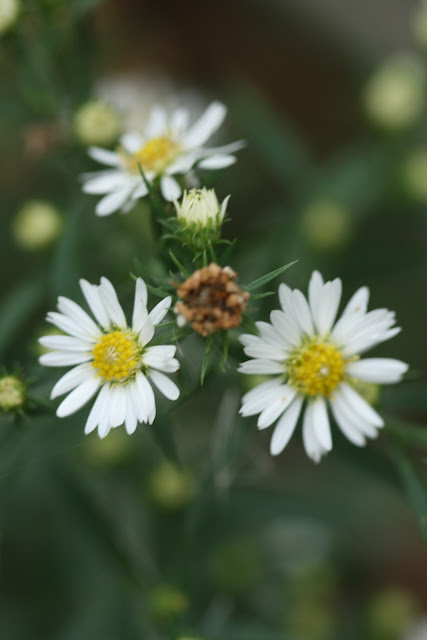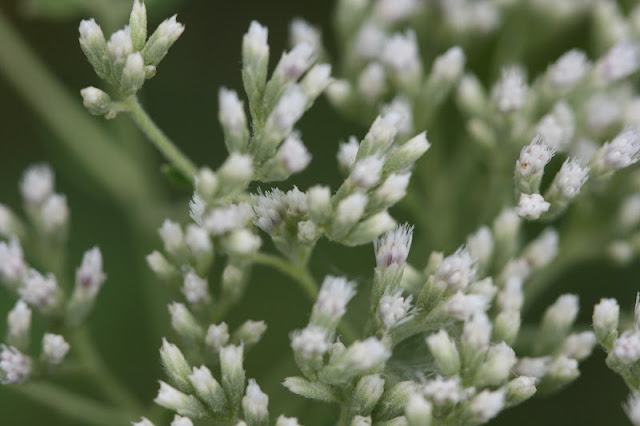Woody goldenrod (Chrysoma pauciflosculosa) is the sole member of this genus. It is not a true goldenrod (Solidago spp.,), but a sub-shrub in the aster family with golden yellow flowers that look a bit like those of the goldenrrods. It is found only in the western half of the Panhandle, in xeric uplands near the coast and in sandhills and scrubs, and outside Florida from Mississippi to North Carolina in ximilar habitats. It is endangered in North Carolina.
Woody goldenrod is an evergreen perennial that stands about 2-3 feet tall. It produces many thin woody stems and assumes a very rounded aspect at maturity. The foliage is mostly confined to the ends of each stem. The leaves are elliptical and bluish green in color. There are no teeth along the margins and they alternate along the stem. The underside of each leaf is wooly, an adaptation to prevent water loss.
Flowering occurs in late fall. Hundreds of flower heads are formed at the crown of each plant. These heads are produced on stalks that stand an additional 1-2 feeet above the foliage. The ray petals of each are a light lemon yellow. Mature plants in flull bloom are quite spectacular, and like other asters, they attract a large diversity of pollinating insects.
This species prefers full sun and excellent drainage and has high tolerance of salt spray. This makes it an excellent choice for beach dunes and sandhill/scrub settings. But, despite its charm, woody goldenrod is only infrequently available to the home landscaper through commercial native plant nurseries. We have collected seed from a sandhill site in Washington County and hope to have seedlings available by late spring 2013. Should they prosper, we will also experiment with it in our Pinellas County landscape as well.



















































